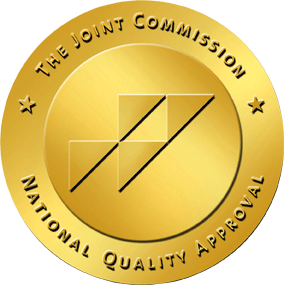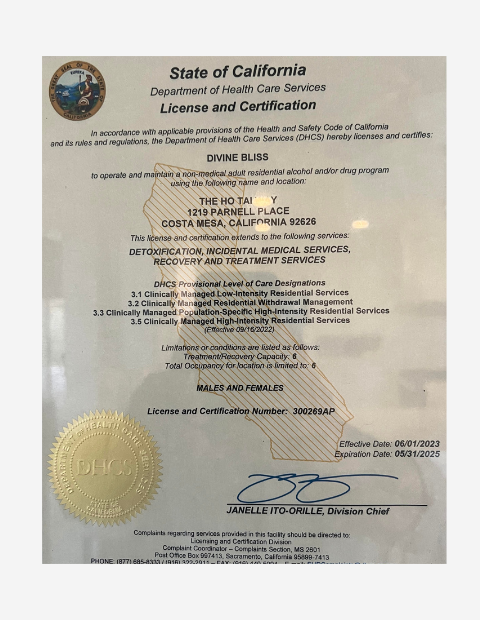Common signs of meth addiction among women include dramatic weight loss, severe dental issues known as “meth mouth,” skin sores from compulsive picking, increased talkativeness, neglect of responsibilities, withdrawal from social activities, paranoia or delusions, erratic mood fluctuations, and hallucinations. These signs reflect the profound impact of meth use on a woman’s physical, behavioral, and psychological well-being.
Meth addiction carves a devastating path through lives, leaving a trail of physical, emotional, and psychological scars.
Women, in particular, may experience these effects differently, with specific signs being more pronounced or manifesting uniquely due to biological and sociocultural factors. If you recognize any of these signs, it’s crucial to explore the benefits of women’s meth addiction treatment.
Highlighting the importance of awareness and early intervention, this article explores the various signs of meth addiction among women.
Signs of Meth Addiction Among Women
Methamphetamine use leads to a plethora of adverse effects, significantly impacting women’s health and well-being.
These effects can be categorized into physical, behavioral, and psychological signs, each telling a part of the story of addiction’s toll.
Approximately 1.6 million adults, on average, used methamphetamine between 2015–2018. Despite the high prevalence of methamphetamine use disorder, the findings indicate that a substantial portion of those affected, including women, do not receive the necessary substance use treatment (CDC).
Related: How to Help Someone with Meth Addiction
Here are the most common signs of meth addiction among women.
Physical Signs of Meth Use in Women
Methamphetamine use can have devastating effects on the body, leading to numerous physical signs that are particularly noticeable in women. These signs not only reflect the drug’s harsh impact but also serve as critical indicators for recognizing addiction. Understanding these signs is crucial for early detection and intervention.
Dramatic Weight Loss
Methamphetamine significantly suppresses appetite, leading to dramatic and unhealthy weight loss in women. This rapid weight decline can result in nutritional deficiencies and weaken the immune system, making the body more susceptible to infections and diseases. The physical appearance becomes gaunt, and the overall health deteriorates, often causing long-term complications.
“Meth Mouth”
One of the most alarming physical signs of meth use is “meth mouth,” characterized by severe dental decay, tooth loss, and gum disease. The acidic nature of meth, combined with neglect of oral hygiene and a dry mouth, accelerates the deterioration of dental health. This condition is not only painful but also affects the individual’s self-esteem and social interactions, as the visible damage is hard to conceal and socially stigmatizing.
Skin Sores
Meth users often experience obsessive skin-picking behavior, leading to sores and acne. The hallucination of bugs crawling under the skin drives this compulsive picking, resulting in open wounds and infections. These sores are particularly difficult to heal due to the compromised immune system from meth use and poor nutrition. The appearance of these sores on visible areas of the body, such as the face and arms, can further alienate the individual from social settings and personal relationships.
Recognizing these physical signs in women can be the first step toward addressing meth addiction. It’s essential to approach the situation with empathy and support, guiding the affected individual towards seeking professional help and treatment.
Behavioral Signs of Meth Use in Women
Behavioral changes are significant indicators of meth use, especially in women, where these shifts can be stark and deeply impactful. These changes often disrupt personal, professional, and social lives, signaling a need for intervention and support.
Increased Talkativeness
Methamphetamine is a powerful stimulant that can lead to a marked increase in energy levels and talkativeness. Women using meth may exhibit a sudden and noticeable change in their communication style, speaking rapidly and excessively. This behavior is driven by the drug’s effect on the brain, enhancing feelings of well-being and alertness. However, this heightened talkativeness can strain relationships and lead to social isolation when the behavior becomes erratic or overwhelming for others.
Neglect of Responsibilities
Meth addiction often leads women to neglect their responsibilities, including work, school, and family obligations. The compulsive need to use the drug takes precedence over all other aspects of life, leading to absenteeism, poor performance, and, eventually, the loss of jobs and relationships. This neglect stems from the drug’s all-consuming nature, as obtaining and using meth becomes the central focus of the individual’s life, pushing aside the importance of daily duties and responsibilities.
Withdrawal from Social Activities
As meth addiction deepens, women may withdraw from social activities they once enjoyed. This withdrawal is partly due to the increasing need to hide their addiction and its physical and behavioral effects. Additionally, the drug alters the brain’s reward system, making meth use the primary source of pleasure, which diminishes interest in social interactions and hobbies. The isolation can exacerbate the addiction, as the lack of a support system leaves the individual with few alternatives to using meth.
These behavioral signs of meth use in women highlight the profound impact addiction has on the individual’s life and behavior. Recognizing these signs provides an opportunity to offer support and resources for recovery, emphasizing the importance of compassionate and professional intervention to help them reclaim their lives from addiction.
Psychological Signs of Meth Use in Women
The psychological impact of methamphetamine use can be profound and debilitating, particularly for women. These effects can alter perceptions, emotions, and behaviors significantly affecting daily functioning and relationships. Understanding these signs is essential for recognizing the need for help and support.
Paranoia or Delusions
Meth use often leads to intense paranoia or delusions, with individuals believing in threats or conspiracies that have no basis in reality. Women may feel irrationally suspicious of friends, family members, or strangers, perceiving them as out to cause harm or betrayal. This heightened state of distrust can severely damage relationships, leading to isolation and exacerbating the cycle of addiction. The paranoia and delusions are not only distressing for the individual but also for those around them, making social interactions challenging and strained.
Erratic Mood Fluctuations
Methamphetamine can cause severe mood swings, with rapid shifts from extreme happiness to deep depression. These erratic mood fluctuations make emotional states unpredictable, affecting personal and professional relationships. Women may find it increasingly difficult to manage their emotions, leading to impulsive decisions, conflicts, and a sense of emotional instability. The impact on mental health can be profound, often requiring professional intervention to address the underlying addiction and its psychological effects.
Hallucinations
Hallucinations, both auditory and visual, are common among meth users. Women may hear voices or see things that aren’t there, leading to confusion and fear. These experiences can be profoundly disturbing, impacting their ability to distinguish reality from drug-induced hallucinations. The strain of dealing with these hallucinations can exacerbate feelings of isolation and despair, making recovery and reintegration into social and professional circles challenging.
The psychological signs of meth use in women underscore the critical need for a comprehensive approach to treatment that addresses both the physical and mental health aspects of addiction. Recognizing these signs opens the door to seeking help, providing a pathway to recovery that includes support for the psychological challenges faced by women struggling with methamphetamine addiction.
Women’s Meth Addiction Treatment in California
When facing meth addiction, finding a supportive and effective treatment program is crucial. The Ho Tai Way in Costa Mesa, California, offers a compassionate and tailored treatment approach for women battling meth addiction.
Our women’s meth addiction treatment program focuses on healing the whole person, addressing the physical, emotional, and psychological aspects of addiction. With a serene environment, experienced professionals, and a supportive community, we provide the tools and guidance needed for recovery and empowerment.
Discover a path to a healthier, substance-free life with The Ho Tai Way’s women’s meth addiction treatment program.
Frequently Asked Questions
Methamphetamine addiction is a complex issue that affects individuals differently, leading to various questions about its signs, behaviors, and concealment.
This FAQ section aims to highlight some of the most common inquiries.
What are some characteristics of meth addicts?
Meth addicts often exhibit several physical and behavioral characteristics, including dramatic weight loss, dental problems known as “meth mouth,” skin sores, increased talkativeness, erratic behavior, and sleep disturbances. These signs result from the drug’s intense effects on the body and mind.
How do meth addicts act? What are some signs you should look for?
Meth addicts may exhibit increased energy, talkativeness, and restlessness, coupled with aggressive or paranoid behavior. Signs to look for include neglect of personal hygiene, drastic changes in social activities, and unusual sleeping patterns, indicating a possible struggle with addiction.
How long can someone hide a meth addiction? What factors influence this?
The ability to hide meth addiction varies significantly among individuals and depends on factors like the severity of addiction, personal circumstances, and the support system’s vigilance. Some may conceal their addiction for months or even years, but eventually, the physical and behavioral signs become too evident to hide.
How do meth addicts try to hide their symptoms?
Meth addicts might use various strategies to hide their symptoms, including wearing long sleeves to cover skin sores, using mouthwash or gum to combat bad breath from “meth mouth,” applying makeup to hide sores or gauntness, and fabricating stories to explain away erratic behavior or absences.
Can someone using meth show no signs of addiction?
In the early stages of use, some individuals may not exhibit visible signs of meth addiction, managing to maintain a semblance of normalcy. However, as addiction progresses, it becomes increasingly difficult to conceal the physical, behavioral, and psychological effects of the drug.
Conclusion
Meth addiction among women is a pressing issue that requires immediate attention and intervention.
Recognizing the signs of meth addiction is the first step toward recovery. With the proper support and treatment, such as the program offered by The Ho Tai Way in Costa Mesa, California, women can reclaim their lives from meth addiction.
Awareness, compassion, and comprehensive care are vital in returning to health and well-being.









